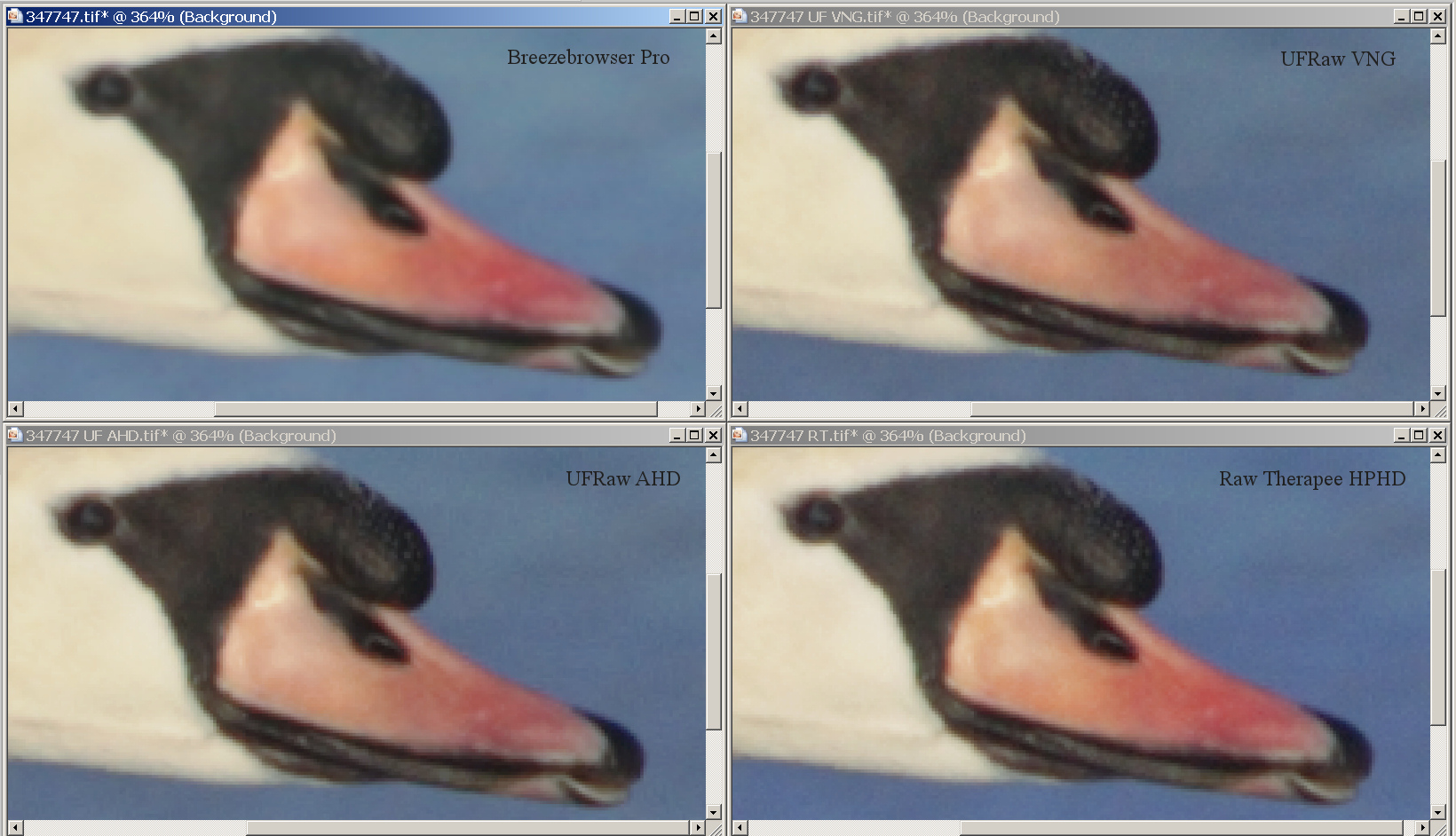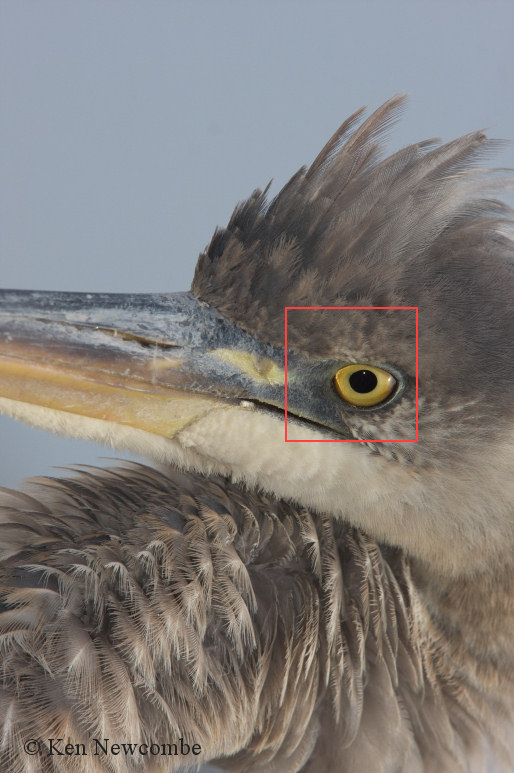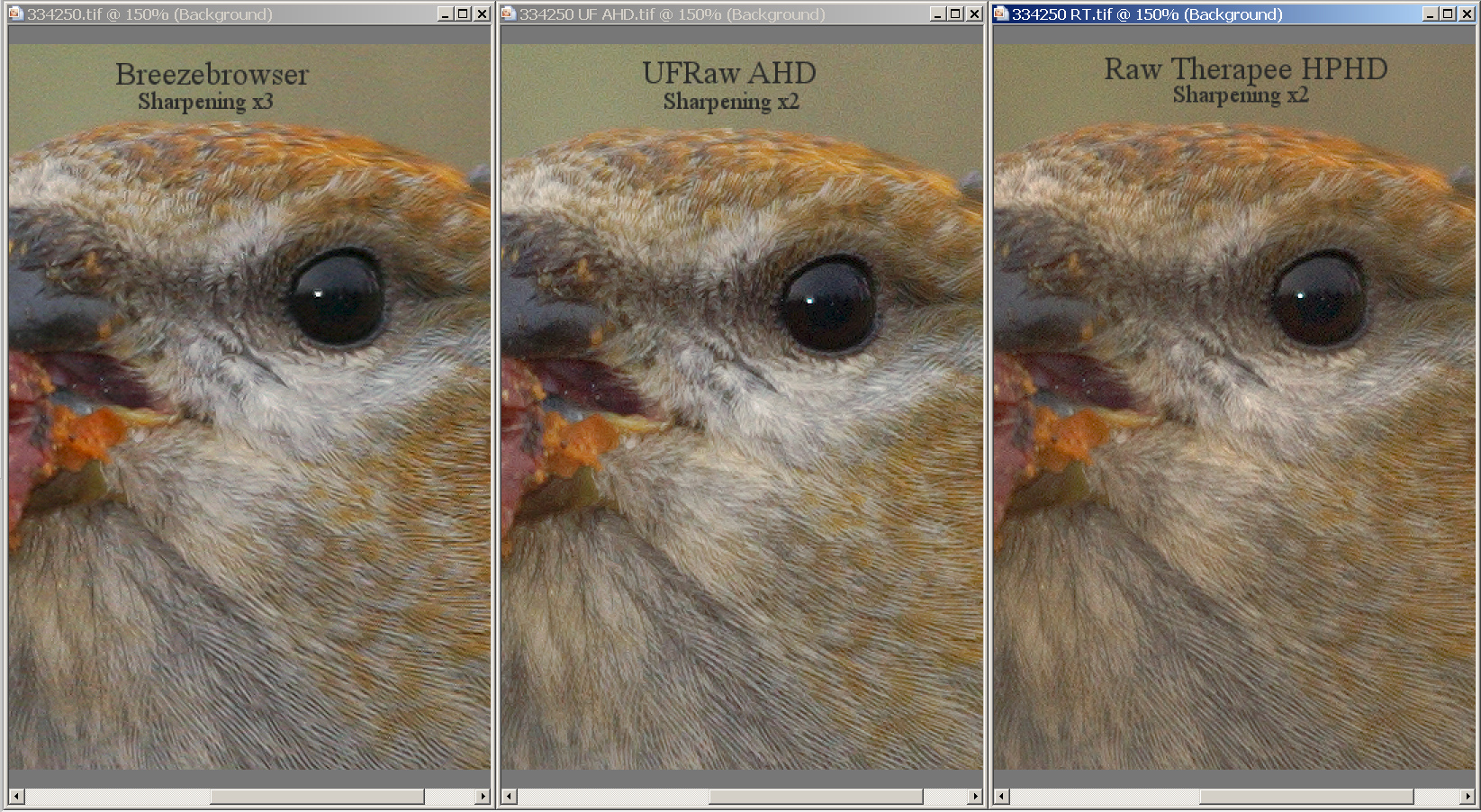Raw Converter fine detail comparison
For several years I have used Breezebrowser Pro for it's fast browser and converter simplicity. I was aware that it used the same conversion engine as Canon's Zoombrowser and would produce images that looked the same. I decided to test some of the Converters that use newer conversion engines and that allow a choice of more modern demosaicing algorithms.
Demosaicing is the underlying math which a RAW converter uses to combines data from camera pixels to make image pixels. Some methods may produce finer detail and less color artifacts in some images but may produce pattern noise in out of focus backgrounds or artifacts. A lot depends on the structure of the image detail as to how well a given method will perform. Sharpening can make images converted with differing demosaicing methods look very similar. Some methods may give better results on overexposed areas than others. To see if the differences were significant I converted several images with various RAW converters and assessed the results. I present three of the many comparisons I performed below.
In all examples the same RAW file was used with each RAW converter set to optimal exposure and color balance but no sharpening. A crop revealing pixel level detail or near pixel level detail was duplicated on all of the converted images and compared. No sharpening or noise reduction was applied in the RAW conversion process. The images below represent only a few of the many I have tested. All images were first converted to TIF, cropped and finally converted to JPG with minimal compression for display in Internet browsers. These images were all taken with a Canon 300mm f2.8 lens at f5.6 and a Canon 40D camera.
In this comparison of the same Swan image UFRaw used VNG and AHD and Raw Therapee used HPHD demosaicing methods. The background artifacts were enhanced slightly in the conversion from TIF to the JPG file shown below. Comparison tests with other images reveal similar results. No sharpening was applied to this image or the crops.

The Great Blue Heron image compares a crop with Breezebrowser with and without sharpening and Raw Therapee with no sharpening. At the size shown little difference is apparent between Raw Therapee and BB sharpened.


This comparison shows a cropped image with linear features. In this comparison sharpening was applied to a Breezebrowser crop. Canon DPP was also compared.
300% blow up.
Note the artifacts in the area under the eaves in the Raw Therapee crop, the Breezebrowser is much smoother in this area. However the roof shingles at the bottom of the crop is better defined in Raw Therapee.
In the image of the Pine Grosbeak head I cannot see much difference in image detail, Breezebrowser converted images needed one more round of sharpening applied to the TIF file to match the other images but the end result is much the same. These crops are slightly below pixel resolution level.

Conclusion:
Breezebrowser converted images display slightly less fine detail than the other three converters. This is only apparent in large blowups where pixels can be resolved. Even after sharpening was applied to the TIF file the Breezebrowser image showed slightly less detail in crops of some images large enough to show pixels. After taking sharpening into account there is little or no difference in image detail in smaller print sizes with varying demosaicing methods. The background out of focus in Breezebrowser shows less artifacts. Differences are slight for the most part and they do not make or break an image. However in print sizes of 16 x20 inches or thereabouts which nearly resolve pixels there is a perceptible difference in image detail in favor of Raw Therapee.
UFRaw and Raw Therapee allow various demosaicing methods, the one that worked best overall in my tests in terms of detail, minimal moiré and color artifacts was Raw Therapee HPHD at level 1.
It is important to note that most of the modern demosaicing methods produce a sharp image after conversion to TIF as opposed to some of the older methods that need a significant amount of sharpening. This may result is less sharpening halos in some high contrast images. Demosaicing is in many respects related to sharpening in that it combines pixels to produce a high contrast edge.
For now I will use Breezebrowser for my Internet sized images and small prints (less than 10" x 12") and for large prints or images requiring significant overexposure adjustment I will have use Raw Therapee. Be aware that as of March 5th, 2008 Raw Therapee is still being developed and has several bugs.
Raw Therapee is a free download at: http://www.rawtherapee.com/
UFRaw is available as a Free download at: http://ufraw.sourceforge.net/
A further comparison may be seen at: http://linuxphoto.org/test_demosaicing.html
Email: Ken
Newcombe
Site and contents © 2008 Ken Newcombe